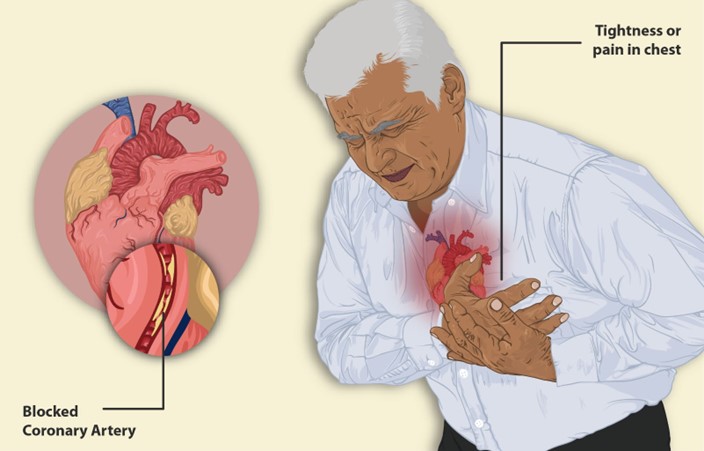A nurse is providing teaching for a client who has a new diagnosis of angina pectoris. Which of the following information should the nurse include about anginal pain?
The pain usually lasts longer than 20 min.
The pain persists with rest and organic nitrates.
Pain can often be relieved by sitting up.
Exertion and anxiety can trigger the pain.
The Correct Answer is D
Choice A Reason: This is incorrect. Anginal pain usually lasts less than 20 min and subsides with rest or medication. Pain that lasts longer than 20 min may indicate a myocardial infarction.
Choice B Reason: This is incorrect. Anginal pain usually responds to rest and organic nitrates, such as nitroglycerin. Pain that does not improve with these measures may indicate unstable angina or a myocardial infarction.
Choice C Reason: This is incorrect. Anginal pain is not affected by the position of the client. Pain that is relieved by sitting up may indicate pericarditis or pleurisy.
Choice D Reason: This is correct. Anginal pain is caused by a temporary imbalance between the oxygen demand and supply of the myocardium. Factors that increase the oxygen demand, such as exertion, anxiety, cold, or heavy meals, can trigger anginal pain.

Nursing Test Bank
Naxlex Comprehensive Predictor Exams
Related Questions
Correct Answer is B
Explanation
Choice a) is incorrect because troponin is not an enzyme, but a protein. Enzymes are molecules that speed up chemical reactions in the body. Troponin does not have this function.
Choice b) is correct because troponin is a protein that binds to calcium and regulates the contraction of heart muscle fibers. When the heart muscle is injured, such as in a myocardial infarction, troponin leaks into the bloodstream and can be detected by a blood test. The higher the level of troponin, the more severe the damage to the heart.
Choice c) is incorrect because troponin does not help transport oxygen throughout the body. That function is performed by hemoglobin, which is a protein found in red blood cells.
Choice d) is incorrect because troponin is not a lipid, but a protein. Lipids are fats that are used for energy storage and cell membrane formation. Troponin does not have these roles.
Correct Answer is D
Explanation
The correct answer is D. Blood pressure 115/68 mm Hg.
Choice A reason: Heart rate 180/min is incorrect because, although an increased heart rate is a compensatory mechanism, a rate of 180/min is excessively high and suggests a more severe stage of shock or other cardiac issues.
Choice B reason: Mottled skin is incorrect as it indicates poor perfusion seen in decompensated shock, where organ dysfunction begins to manifest, not in the compensatory stage.
Choice C reason: Hypokalemia, or low potassium levels, is incorrect because electrolyte imbalances are not typically a finding in the compensatory stage of shock. Normal potassium levels range from 3.5 to 5.0 mEq/L.
Choice D reason: Blood pressure 115/68 mm Hg is correct because it falls within the normal blood pressure range, which the body strives to maintain during the compensatory stage of shock through various mechanisms.
Whether you are a student looking to ace your exams or a practicing nurse seeking to enhance your expertise , our nursing education contents will empower you with the confidence and competence to make a difference in the lives of patients and become a respected leader in the healthcare field.
Visit Naxlex, invest in your future and unlock endless possibilities with our unparalleled nursing education contents today
Report Wrong Answer on the Current Question
Do you disagree with the answer? If yes, what is your expected answer? Explain.
Kindly be descriptive with the issue you are facing.
